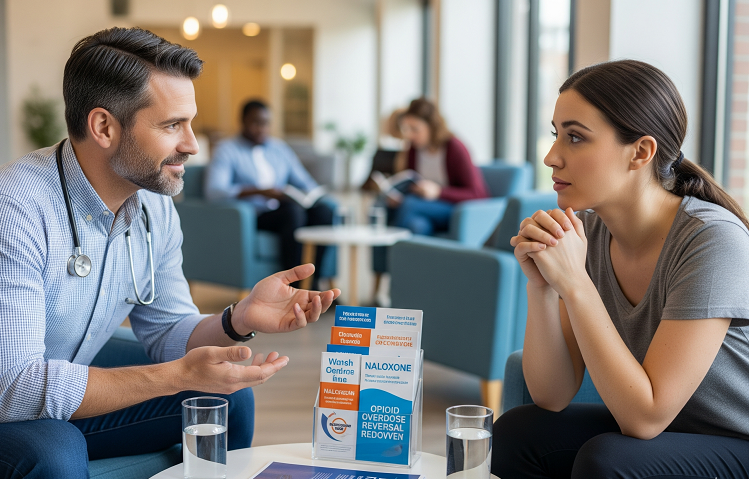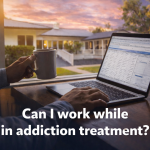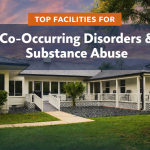The Sign of an Opiate Overdose may be the difference between life and death and understanding it may help save a life. Prescription painkillers, heroin, and other drugs are opiates and opioids that influence the brain and central nervous system. As much as these drugs may alleviate extreme pain, they are associated with a high chance of misuse and overdose. Early identification of the red flags ensures that intervention is done early to save lives.
Opiate Overdose Drug
There is more to an opiate overdose drug than taking a lot of it. It occurs when opiates overpower the brains regulating capacities of the body to control the important body processes such as breathing and heart rate. Since opiates slow down the body, an overdose may result into respiratory failure, unconsciousness and death unless they are treated.
Overdose risk is caused by a variety of factors which include:
- Increasing the dosage above the prescribed level.
- Combining opiates and alcoho or sedatives.
- Taking opioids in the street such as heroin or other drugs.
- Relapse after a period of abstinence.
Sign of an Opiate Overdose
Slowed or stopped breathing is the most frequent Sign of Opiate Overdose. The lack of oxygen can cause an individual to unconsciousness or brain damage. Other clear signs include:
- Severe drowsiness, or lack of ability to remain alert.
- Blue or gray lips and fingertips.
- Very slow or shallow breathing.
- Cold, clammy skin.
- Pinpoint pupils (very small).
In case of any suspicion of overdose, it is a medical emergency. The effects can be reversed by immediate action which could include calling 911 and naloxone administration.
100% Confidential Support is Available 24/7
No matter what you’re going through, you’re not alone. Our dedicated team is here to provide a safe, judgment-free space where you can talk openly and honestly. Whether you need emotional support, resources, or just someone to listen.
We’re here for you—completely confidential and always respectful of your privacy. Call us today!
Symptoms of an Opiate Overdose
Although respiratory distress is one of the obvious symptoms of the opiate overdose, there are several physical and behavioral warning signs. Others can come by, and others grow by:
- Slow, irregular, or absent pulse
- In responsiveness, with loud noise/shaking.
- Gurgling or choking (so-called death rattle).
- Extreme difficulty in speech or muddiness.
- Seizures in extreme cases.
Awareness of these symptoms enables the family members, friends, or bystanders to make prompt life-saving decisions.Lorem ipsum dolor sit amet, consectetur adipiscing elit. Ut elit tellus, luctus nec ullamcorper mattis, pulvinar dapibus leo.
Deland Treatment Solutions
Battling with Drug and Alcohol Addition? Remember, you are not alone and we are here to help you!
Opiate Overdose Medication
Naloxone (also referred to as Narcan) is the best opiate overdose medication. The mechanism of action of this medication is that it quickly attaches to opioid receptors in the brain inverting the effects of the drug. Naloxone is non-toxic, does not involve oral administration, and it comes as nasal spray or injection.
Important points about naloxone:
- Works within minutes.
- There is no effect when opioids are absent.
- Administrable by untrained bystanders.
- Quite frequently needs repeated doses in case of other drugs overdose.
It is essential to have naloxone in case any person who is at risk of opioid overdose is prescribed pain medication or is suffering from addiction.
Opiate Overdose Treatment
Naloxone may be an initial response, but opiate overdose treatment is not limited to emergency medicine. Once the patient has been stabilized in a hospital, the long-term treatment is required to cope with the substance use disorder and eliminate the threat of further overdoses. Treatment may include:
- Medical detox to safely treat withdrawal.
- Behavioral therapy such as CBT or DBT.
- Buprenorphine or methadone medication-assisted treatment (MAT).
- Support groups and aftercare programs for relapse prevention.
We offer high-quality care with a personalized approach to the needs of people at DeLand Treatment Solutions. With the right support system, recovery can be achieved.
Why Quick Action Matters
The overdose of Opiate may develop within a few minutes. The window of intervention is brief but given the right knowledge and reaction, it is possible to save lives. This way by getting to know the warning signs and where to find help you will be in better position to save yourself or a loved one.

Get Help Today
When you or your loved one is having a hard time using opioids, you cannot wait. Every day matters. We work in the field of evidence-based treatment of opioid addiction at DeLand Treatment Solutions. Our staffing is available to help you detox, treat, and recover in the long run.
📞 Call us at (386) 866-8689 today to talk to an admissions counselor and be on your way to a healthier and safer future.
The Sign of an Opiate Overdose is an important sign to recognize to prevent and intervene. It can be having knowledge of the symptoms or the naloxone or going to a professional, but each step is important to save a life.
FAQs about Opioid Overdose
Which of the following are symptoms of an opioid overdose?
Symptoms include very slow or stopped breathing, unconsciousness, pinpoint pupils, and cold or clammy skin. Additional warning signs may include choking sounds, confusion, or blue-tinged lips and fingertips. These require immediate medical attention.
What are 5 signs of an overdose?
Five common overdose signs are slowed breathing, unresponsiveness, pinpoint pupils, bluish skin, and irregular heartbeat. Each of these is a medical emergency, and rapid response is crucial for survival.
What are the signs of opiate toxicity?
Signs of opiate toxicity include dizziness, nausea, severe drowsiness, shallow breathing, and confusion. In toxic levels, opiates impair the central nervous system, which can quickly lead to respiratory failure if not treated.
What are the three main signs and symptoms of a drug overdose?
The three main signs are respiratory depression, loss of consciousness, and abnormal skin coloration (blue, gray, or pale). These indicate the body is not receiving enough oxygen and require immediate medical intervention.





















